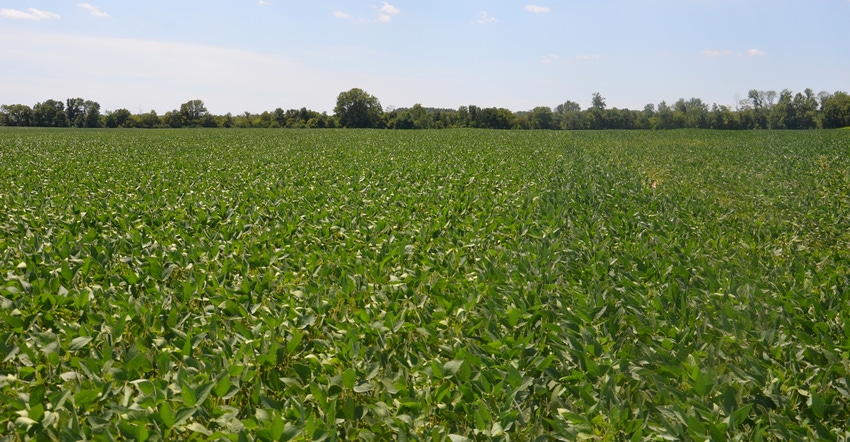
Everybody knows that during the growing season, healthy soybeans are green. And green is green, right? Who cares how dark or light green they may be? Steve Gauck says that’s true if the difference is linked to varietal differences. In that case, it likely has nothing to do with yield potential. However, if the difference in color is caused by something else, say a nutrient deficiency, then you may indeed care about how green your soybeans are in the field.
“There are at least three varieties planted in the Soybean Watch ’18 field, and there were differences in color during the growing season between a couple of varieties,” Gauck reports. He’s a sales agronomist for Beck’s, based near Greensburg, Ind. Beck’s sponsors Soybean Watch ’18.
“The difference was pronounced enough that you could stand in the field near the dividing line between these two varieties and see it visually with the naked eye,” Gauck says. “One variety was definitely darker green throughout the growing season than the other variety.
“That doesn’t tell us anything about yield potential or other characteristics. All it says is that somewhere in the parentage of those two different varieties, one line tended to express a deeper green color in the leaves than the other. If you didn’t have them side by side, you probably wouldn’t even notice it.”
Other causes
Variety isn’t the only factor which can cause soybeans to vary in color. If soybeans are either on the low side or deficient in sulfur, they can show up as a pale green color, says Jim Camberato, Purdue University Extension soil fertility specialist. Since power plants cleaned up the air emitted from these plants to comply with federal laws, far less sulfur is being launched into the atmosphere. Corn and soybeans may not be getting as much sulfur as they need in every case from the soil anymore.
Shaun Casteel, Purdue Extension soybean specialist, has collected data over the past two seasons showing striking response to sulfur application in fields in extreme northern Indiana. He’s expanded his trials across the state this year, and the InField Advantage farmer testing program operated by the Indiana State Department of Agriculture also has several farmers across the state testing whether sulfur application on soybeans can improve yields.
Camberato notes that lighter-colored areas where sulfur is low to deficient show up in aerial images taken during unmanned aerial vehicle flights. He has observed cases already where soybeans are lighter green to almost yellow in aerial images in areas known to be deficient in sulfur.
These areas often aren’t to the row as in a variety change, however. The only exception could be in trials where sulfur was applied to some strips and not others. If soybeans are responding to the sulfur application, a change in color may be visible to the row.
Stay tuned once yield results come in from fields where sulfur trials were conducted this year, Camberato advises.
About the Author(s)
You May Also Like




